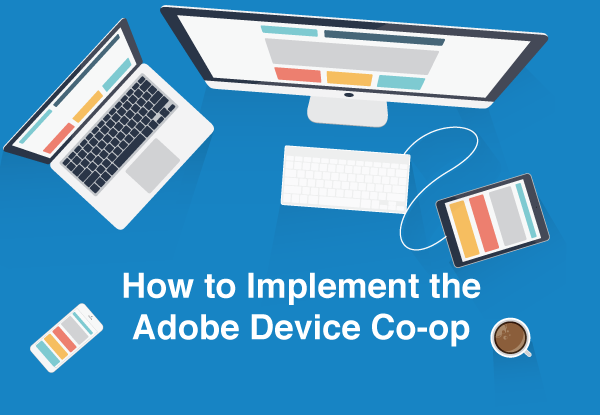Implement Adobe Device Co-op to strengthen your customer-centric analytics.
What do donuts from your marketing team and a glowing year-end performance review from your boss have in common? You!
Yes, you can be the recipient of both of these treats. How?

By enabling the marketing team to engage and manage customer experiences across devices, and by enabling your boss to make business decisions based on actual people, not devices, interacting with your site. This enablement is achieved with Adobe’s Device Co-op.
By implementing the Adobe Device Co-op, you’ll have very happy decision-makers across your organization, and we all know happy coworkers + a happy boss = donuts and a great review.
Adobe has a nice press release that dives into what the Device Co-op is and how it works – so I won’t rehash it here. The bottom line is that the Device Co-op realizes that you are browsing from that fancy new iPhone, the MacBook from home, and that not-quite-so-new pc from work. Rather than view you as three unique visitors, or sets of cookies, Device Co-op views you as one person. With Adobe’s Device Co-op connecting devices to a person, your Marketing team and boss are able to make people-centric decisions.
To start reaping these benefits, there are five technical requirements:
- Use at least one of these Adobe Solutions: Analytics, Audience Manager, Media Optimizer or Target
- Experience Cloud ID (formerly known as Marketing Cloud ID and Visitor ID) has two requirements:
- Be on version 1.7 or higher. An easy way to implement or update Experience Cloud ID on your site is through Launch. Adobe has steps to follow for Android and iOS implementations.
- Use the Customer ID feature – website, Android, iOS – to pass an anonymized ID for known visitors (i.e. visitors coming to the site from an email) or for authenticated users (i.e. visitors who have logged in or registered). Passing this anonymized ID allows Adobe’s Device Co-op to create deterministic links between people and their devices — which is the whole purpose of the Co-op!
- Be on version 1.5.4 or higher of AppMeasurement. For your convenience, here are links to Adobe’s documentation on how to implement or update your AppMeasurement version via Launch or by downloading it from the Code Manager.
- For those using Mobile SDKs, be on Android version 4.8.3 or iOS version 4.8.5 or higher.
- And, for Target, any version of at.js is acceptable. Or if your Target implementation uses mbox.js, then version 58 or later is required. Now, remember mbox.js is no longer being updated and Adobe is encouraging users to migrate to at.js.
While the information above is from the technical perspective, there are a couple items your marketing team will need to do as well: update your site’s terms and conditions (Adobe will provide boilerplate language to use) and supply your company’s logo to be used on Adobe’s Device Co-op Privacy Control site. And your boss, under the watchful eye of the legal team, will need to sign an agreement to formally join the cooperative.
Want help putting this in place, or getting more from your implementation? Reach out to us for more donut and glowing year-end review ideas!
